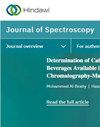基于激发-发射矩阵和时间间隔选择的 CDOM 干扰下的多环芳烃检测
IF 2.1
4区 化学
Q4 BIOCHEMICAL RESEARCH METHODS
引用次数: 0
摘要
荧光技术是检测水中多环芳烃(PAHs)的有效工具。然而,不同多环芳烃和共存的有色溶解有机物(CDOM)的光谱重叠会降低荧光检测的准确性。本研究提出了一种基于激发-发射矩阵的单激发间隔选择方法,用于定量检测 CDOM 干扰下的四种 PAHs:芴、芘、菲和苯并(a)芘。通过稳定性分析获得了每种多环芳烃的最佳激发波长,在此基础上通过混沌粒子群优化获得了最佳发射间隔。建立了干扰下四种多环芳烃的偏最小二乘(PLS)预测模型。结果表明,与其他建模方法相比,在 CDOM 干扰下,区间选择模型具有更好的预测精度(平均相对误差< 10%)。此外,还对该方法的回收率和检出限进行了评估。该研究为荧光检测水中多环芳烃干扰提供了一种新的有用策略。本文章由计算机程序翻译,如有差异,请以英文原文为准。
Multiple PAHs’ Detection under CDOM Interference Based on Excitation-Emission Matrix and Interval Selection
Fluorescence technology is an effective tool for detecting polycyclic aromatic hydrocarbons (PAHs) in water. However, the accuracy of fluorescence detection is reduced by the spectral overlap of different PAHs and coexisting colored dissolved organic matter (CDOM). In this study, a single-excitation interval selection method based on an excitation-emission matrix is proposed to quantify four PAHs: fluorene, pyrene, phenanthrene, and benzo(a)pyrene under CDOM interference. The optimal excitation wavelength for each PAH was obtained by stability analysis, based on which the optimal emission interval was obtained by chaotic particle swarm optimization. The partial least squares (PLS) prediction models of four PAHs under interference were established. On comparing with other modeling methods, the results show that the models with interval selection have better prediction accuracy (mean relative error < 10%) under CDOM interference. The recovery rate and limit of detection of the method were also evaluated. This study provides a new and helpful strategy for fluorescence detection of interfering PAHs in water.
求助全文
通过发布文献求助,成功后即可免费获取论文全文。
去求助
来源期刊

Journal of Spectroscopy
BIOCHEMICAL RESEARCH METHODS-SPECTROSCOPY
CiteScore
3.00
自引率
0.00%
发文量
37
审稿时长
15 weeks
期刊介绍:
Journal of Spectroscopy (formerly titled Spectroscopy: An International Journal) is a peer-reviewed, open access journal that publishes original research articles as well as review articles in all areas of spectroscopy.
 求助内容:
求助内容: 应助结果提醒方式:
应助结果提醒方式:


